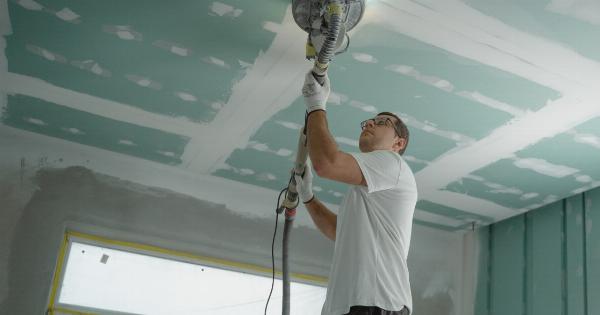Dust mites are microscopic organisms that can trigger allergies in many people. These tiny creatures thrive in warm and humid environments, making our homes an ideal breeding ground for them.
Dust mites feed on dead human skin cells and are commonly found in bedding, upholstered furniture, stuffed toys, and carpets. If you or someone in your household suffers from allergies, it’s important to understand how to manage dust mites effectively. In this article, we will explore various strategies to minimize exposure to dust mites and alleviate allergic symptoms.
1. Keep Your Home Clean and Decluttered
A clean and clutter-free environment is essential in managing dust mite allergies. Regularly vacuum and dust your home using a vacuum cleaner equipped with a HEPA (High-Efficiency Particulate Air) filter.
Pay special attention to areas where dust tends to accumulate, such as carpets, rugs, curtains, and upholstered furniture. Avoid using feather dusters or dry cloths, as these can stir up dust particles and exacerbate allergies. Instead, use damp microfiber cloths for dusting to trap dust effectively.
2. Wash Bedding Frequently
Bedding, including pillows, mattresses, and bed linens, can harbor large numbers of dust mites. Wash your bedding in hot water at least once a week to kill the mites and remove any allergens they produce.
Ideally, use water with a temperature of 130°F (54°C) or above to effectively eliminate dust mites. Additionally, consider using dust mite-proof covers on mattresses, pillows, and duvets to create a barrier between you and the mites.
3. Maintain Optimal Humidity Levels
Dust mites thrive in humid environments, so it’s crucial to control the humidity levels in your home. Aim for a humidity level below 50% to discourage dust mite growth.
Use dehumidifiers in damp areas like basements and bathrooms, and ensure proper ventilation throughout your home. Good air circulation helps prevent excess moisture accumulation and creates an unfavorable environment for dust mites.
4. Choose Allergen-Proof Flooring
When it comes to managing dust mites, flooring choices can make a significant difference. Opt for hard surface flooring such as hardwood or tile instead of carpets, which tend to collect and trap allergens.
If you prefer carpet, choose low-pile or short-loop options that are more resistant to dust accumulation. Regularly steam clean carpets or hire professional carpet cleaners who specialize in removing allergens to further minimize dust mite presence.
5. Reduce Stuffed Toys and Clutter
Stuffed toys not only accumulate dust but also provide an ideal environment for dust mites to thrive. Minimize the number of stuffed toys in your home, particularly in bedrooms.
If possible, replace them with washable toys and regularly launder them in hot water. Additionally, reducing general clutter in your living spaces makes it easier to clean and maintain a dust-mite-free home.
6. Maintain a Pet-Free Bedroom
Pets, especially those with fur or feathers, can introduce additional allergens into your home. To minimize exposure to allergens, keep your bedroom pet-free. Pets carry dander, saliva, and dust on their fur, all of which can trigger allergic reactions.
By establishing a pet-free zone, you create a sanctuary for a good night’s sleep, free from allergy-inducing substances.
7. Invest in Air Purifiers
Air purifiers with HEPA filters can effectively reduce the number of airborne allergens, including dust mite particles. Place air purifiers in bedrooms and main living areas for optimal results.
These devices help filter out dust mite allergens, improving indoor air quality and reducing allergy symptoms. Remember to clean and replace filters regularly as recommended by the manufacturer to maintain their efficiency.
8. Dust Mite-Reducing Sprays
Several dust mite-reducing sprays are available on the market that claim to neutralize allergens and inhibit dust mite growth.
These sprays typically contain ingredients like tannic acid or benzyl benzoate, which can help alleviate symptoms for some individuals. However, it’s important to note that these sprays may not be effective for everyone, and their long-term efficacy is still a subject of debate among experts.
9. Regularly Clean Air Ducts and Vents
Dust mites can find their way into your air ducts and vents, and their presence can exacerbate allergies. Schedule regular professional cleaning of your air ducts to remove any accumulated dust and allergens.
Additionally, regularly vacuum your vent covers and replace filters in your heating and cooling systems to ensure clean air circulation throughout your home.
10. Seek Medical Advice
If you or a family member continues to experience persistent allergic symptoms despite implementing preventive measures, consult a healthcare professional.
They can diagnose the underlying cause of your allergy and recommend appropriate treatment options. Allergy testing can help identify specific triggers, including dust mites, and guide targeted interventions such as immunotherapy.
Conclusion
Managing dust mites and their associated allergies requires consistent effort and a comprehensive approach.
By keeping your home clean, washing bedding regularly, controlling humidity levels, and reducing dust mite-friendly environments, you can minimize allergic reactions and create a healthier living environment for you and your family. Remember to seek medical advice for persistent symptoms and explore targeted treatment options to enhance your overall well-being.





























